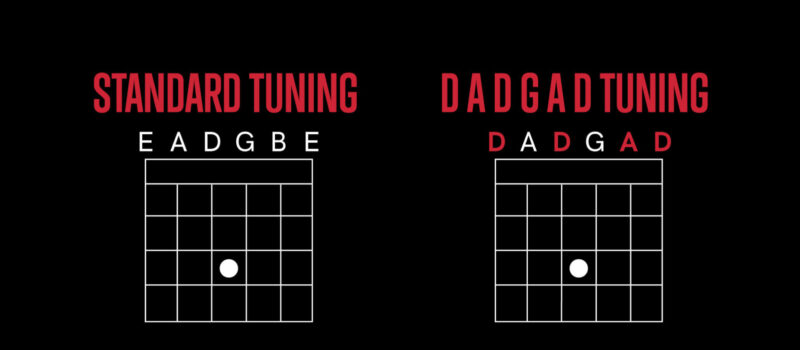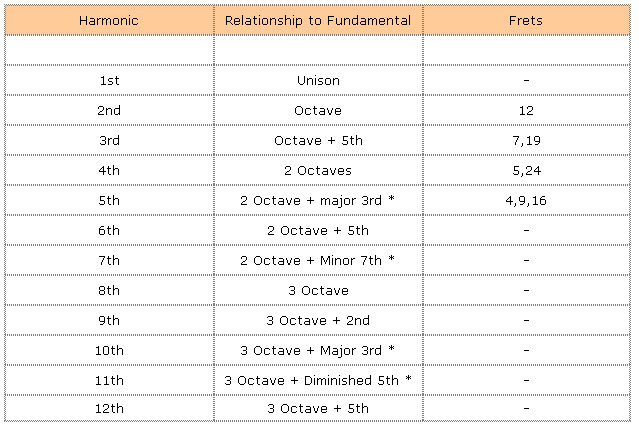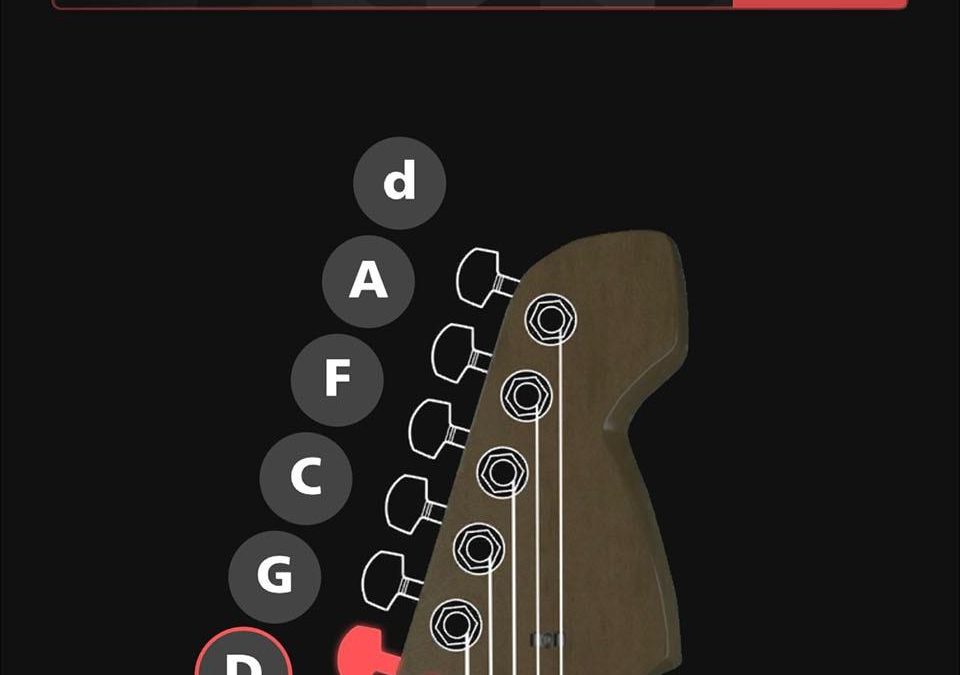Have you ever felt like your acoustic guitar is just waiting to unleash its true musical potential? Well, it’s time to set that six-stringed beast free with the magic of open tunings! No longer will your trusty guitar be relegated to strumming basic chords – it’s time to unlock a world of sonic possibilities and make your friends green with envy at your newfound guitar wizardry. So grab your capo, dust off those fingers, and get ready to take your playing to a whole new level. Let’s dive into the world of open tunings and watch as your musical dreams come alive!
Contents
- 1 Exploring the World of Open Tunings on Acoustic Guitar
- 2 The Foundation of Open Tuning: Understanding the Basics
- 3 The Benefits of Open Tunings for Songwriting and Performance
- 4 Mastering Popular Open Tunings: From DADGAD to Open G
- 5 Innovative Techniques for Playing in Open Tunings
- 6 Expanding Your Musical Horizons with Less Common Open Tunings
- 7 Tips for Smooth Transitioning Between Standard and Open Tunings
- 8 FAQs
- 9 Ready to unleash your inner musical wizard?
Exploring the World of Open Tunings on Acoustic Guitar
So, you’ve mastered standard tuning on your acoustic guitar and you’re ready to dive into the wild world of open tunings. Get ready to unlock a whole new realm of musical possibilities as we explore some of the most popular open tunings for acoustic guitar!
First up, we have the DADGAD tuning, also known as the folk musician’s best friend. With this tuning, you’ll achieve a lush, open sound that’s perfect for Celtic, folk, and even blues music. Just strum those open strings and let the magic happen!
Next, let’s talk about Open D tuning. By tuning your guitar to DADF#AD, you’ll create a beautiful, harmonious sound that’s ideal for fingerstyle playing. Get ready to impress your friends and family with your newfound guitar skills!
And finally, we have Open G tuning, also known as the Keith Richards special. By tuning your guitar to DGDGBD, you’ll be able to play classic songs like “Brown Sugar” and “Wild Horses” with ease. Rock on, my friends!
The Foundation of Open Tuning: Understanding the Basics
So you’re ready to dive into the world of open tuning, but you’re not really sure where to start. Fear not, dear friend, for I am here to guide you through the basics that will serve as the foundation for your open tuning adventures.
First and foremost, let’s talk about what open tuning actually is. In a nutshell, open tuning is when you tune your guitar (or any other string instrument) in such a way that when you strum all the strings without fretting anything, it produces a chord. Sounds pretty cool, right?
Now, onto the fun part – understanding the different types of open tunings. There are countless open tunings out there, but here are a few popular ones to get you started:
- DADGAD – known for its rich, Celtic sound
- Open G – a favorite among blues and rock guitarists
- Open D – perfect for slide guitar and folk music
Once you’ve familiarized yourself with the basics of open tuning and tinkered around with a few different tunings, the possibilities are endless. So grab your guitar, tune up, and let the open tuning adventures begin!

The Benefits of Open Tunings for Songwriting and Performance
Open tunings are a godsend for songwriters and performers alike. They offer a range of benefits that can take your music to the next level, from inspiring new creative ideas to adding depth and complexity to your sound.
One of the biggest perks of open tunings is the unique harmonies they produce. By simply adjusting a few strings, you can create rich, lush chords that are impossible to achieve in standard tuning. This opens up a whole world of sonic possibilities, allowing you to experiment with different textures and moods in your music.
Not only do open tunings make your music sound more interesting, they can also make it easier to play. Because the strings are tuned to a specific chord, you can simply strum across all the strings to produce a full, rich sound without having to worry about complicated fingerings. This can be a game-changer for guitarists who struggle with complex chord shapes.
Lastly, open tunings can breathe new life into old songs. By reimagining familiar tunes in an open tuning, you can give them a fresh, unique twist that will keep audiences on their toes. Who knew that a simple tweak of a few strings could have such a big impact on your music?

Mastering Popular Open Tunings: From DADGAD to Open G
So, you’ve decided to dip your toes into the world of open tunings, eh? Well, buckle up because we’re about to take a wild ride from DADGAD to Open G and everywhere in between!
First up, let’s talk about DADGAD - the gateway drug of open tunings. With its rich, lush sound and mysterious, modal vibe, DADGAD is sure to have you hooked in no time. Just make sure to stock up on capos because once you start experimenting with this bad boy, you won’t be able to get enough!
Next on our list is Open G – the rebel of open tunings. With its swaggering bluesy feel and devil-may-care attitude, Open G is sure to make you feel like a rock god in no time. Just be prepared for your neighbors to start banging on the walls because once you start cranking out those Keith Richards riffs, there’s no stopping you!
But wait, there’s more! From Open D to Open C, the world of open tunings is vast and full of surprises. So grab your slide, grab your pick, and get ready to dive headfirst into the wild and wonderful world of alternate tunings. Trust me, your guitar playing will never be the same!

Innovative Techniques for Playing in Open Tunings
Imagine you’re a wizard, conjuring up magical sounds with just a few flicks of your fingers. Well, playing in open tunings can give you that same mystical feeling! With a little bit of practice and know-how, you can unlock a whole new world of creative possibilities on your instrument.
First off, let’s talk about the power of the slide. Slide guitar in open tunings is like wielding a fiery sword in battle - you’re unstoppable! Experiment with different slide techniques, such as using your index finger for precise control or letting loose with a wild vibrato. The slide is your key to unlocking ethereal tones and adding a touch of otherworldly charm to your playing.
Next up, let’s delve into the realm of alternate chord voicings. In open tunings, traditional chord shapes go out the window - in a good way! Try out different fingerings and experiment with inversions to discover unique and unexpected sounds. Embrace the chaos and let your fingers wander where they’ve never wandered before. Who knows what hidden treasures you might unearth?
And lastly, don’t forget to channel your inner mad scientist when it comes to exploring new tunings. Mix and match different strings to create your own custom tuning, or take inspiration from legendary players like Robert Johnson or Joni Mitchell. The possibilities are endless, so don’t be afraid to venture into uncharted territory. After all, that’s where the magic truly happens!
Expanding Your Musical Horizons with Less Common Open Tunings
So you’ve mastered standard tuning and are looking to venture into the wild world of less common open tunings? Well buckle up, because things are about to get funky!
One great way to expand your musical horizons is by experimenting with Open D Minor tuning. It’s like regular Open D tuning, but with a dark and mysterious twist. Grab your slide and get ready to channel your inner bluesman as you explore the hauntingly beautiful sounds this tuning has to offer.
If you’re feeling extra adventurous, why not give Open G6 tuning a try? This funky fresh tuning will have you grooving like never before, with its jazzy vibes and unique chord shapes. It may take some getting used to, but once you unlock its potential, you’ll be amazed at the musical possibilities that await.
And let’s not forget about DADF#BE tuning – a favorite among folk musicians and fingerstyle guitarists alike. The rich, resonant tones of this tuning will transport you to a magical musical wonderland, where anything is possible. So grab your acoustic guitar, tune up, and let your fingers do the talking as you explore the rich textures and harmonies of DADF#BE.
Tips for Smooth Transitioning Between Standard and Open Tunings
So, you’ve decided to dip your toes into the world of open tunings, huh? Well, get ready for a wild ride! Transitioning between standard and open tunings can be a bit tricky at first, but fear not, dear guitarists, for I have some tips to make the process as smooth as butter on a hot biscuit.
First things first, make sure you have a reliable tuner on hand. Trust me, trying to tune by ear when switching between standard and open tunings is like trying to navigate through a dark forest without a flashlight – not fun. Invest in a good tuner and save yourself the headache.
Next, practice, practice, practice! Switching between standard and open tunings can feel like learning to juggle flaming torches while riding a unicycle. It takes time and patience, but once you get the hang of it, you’ll be amazed at the beautiful sounds you can create.
Lastly, don’t be afraid to experiment! Open tunings open up a whole new world of possibilities for your playing. Let your creativity run wild and see where it takes you. Who knows, you might just stumble upon your own unique sound that sets you apart from the rest.
FAQs
Why should I bother learning open tunings for acoustic guitar?
Well, if you’re tired of playing the same old chords and progressions on your guitar, open tunings can unlock a whole new world of musical possibilities. Imagine creating lush, rich sounds with just a few simple finger positions. It’s like discovering a secret passageway to a hidden musical realm!
Are open tunings difficult to learn?
Not at all! In fact, open tunings can be a refreshing break from the usual grind of standard tuning. With just a little practice, you’ll be amazed at how quickly you can start incorporating open tunings into your playing. It’s like learning a new language – a few basic phrases and you’ll be improvising like a pro!
What are some popular open tunings for acoustic guitar?
There are many open tunings to choose from, but some of the most popular ones include Open D, Open G, and DADGAD. Each tuning has its own unique sound and feel, so experiment with different tunings to find the one that resonates with you. It’s like trying on different hats – you never know which one will make you look like a rock star!
Can I still play my favorite songs in open tunings?
Absolutely! Many classic songs are actually played in open tunings, so once you get the hang of it, you’ll be able to adapt your favorite tunes to your new tuning. It’s like giving your favorite song a fresh coat of paint – the same familiar melody with a whole new twist!
Will learning open tunings make me a better guitarist?
Definitely! Open tunings can help you think outside the box and push your musical boundaries. By exploring new sounds and chord voicings, you’ll expand your musical palette and become a more versatile guitarist. It’s like adding new colors to your artistic palette – the possibilities are endless!
Ready to unleash your inner musical wizard?
Whether you’re a seasoned guitarist or a newbie strumming away on your six-string, open tunings are sure to add a whole new dimension to your playing. So go ahead, grab your guitar, and start experimenting with these alternate tunings. Who knows, you might just discover a whole new musical world waiting to be unlocked. Happy strumming!



